The advantages of soft mulches like straw, Lucerne and pea straw mulch is that they break down quickly and add nutrients to soil. Wood mulches like bark mulch or mixed tree mulch also have their advantages as they last longer, look great and keep moisture in the soil longer.
| Mulch Type | Advantages | Disadvantages | Where to use |
| Bark Mulch | Range of colors Adds nutrients to soil Stops weeds Replace it less often | Takes longer to break down so not great for vegetables Will take up nitrogen if dug into the soil | Under trees Under shrubs Flower beds Between stepping stones Paths |
| Tree Mulch | Low cost Turns to compost quickly Stops weeds Fertilizes soil Improves soil microbe balance | Takes longer to break down so not great for vegetables Minimal color choice Discolors quickly | Mediterranean herbs Annual flowers Shrubs Trees Between stepping stones Along paths |
| Grass clippings | Free Easy to collect Contains nitrogen | Can prevent rain from reaching soil if too thick Can contain weed seeds | Under large trees Mixed with tree mulch & added to flower beds Added to compost |
| Pea Straw | Repairs soil Adds nitrogen to soil Holds moisture | Browns quickly Needs to be replaced often | Vegetable gardens Strawberries Soil that needs improving |
| Lucerne | High nitrogen Holds moisture | More expensive Discolors | Tomatoes Peppers Strawberries Blueberries |
| Fall Leaves | Free Easy to apply Adds nutrients to soil | Can starve soil of oxygen or light if applied to thick Only available in Fall | Flower beds Under trees Added to compost |
| Straw | Adds carbon to soil Keeps soil moist Adds nutrients Builds soil structure | Breaks down quicker than bark Replaced more often Discolors | Strawberries Blueberries Vegetable gardens Tropical fruit trees |
| Wood shavings | Free or very cheap High carbon | Can clump together Can absorb a lot of nitrogen | Mix together with compost or bark mulch Flower beds Paths Under shrubs |
Bark Mulch
Advantages
Bark mulch is an affordable option for landscaping your backyard. It comes in a range of colors and will add extra nutrients to your soil. Bark mulch is a great option if you want to improve your soil over time as soil microbes will move in to break the mulch down.

Worms will be attracted to the surface of the soil aerating the soil as they dig through to eat the microbes and mulch. Bark mulch is a long lasting mulch and will only need to be topped up 1-2x per year. It is also a heavy mulch so will not be blown in the wind out of your garden bed.
Disadvantages
Bark mulch will take longer to break down so it not a good option for vegetable gardens. At the end of the growing season it will still be sitting on the surface of the soil so is difficult to prepare for your next season of vegetables. Make sure you don’t dig it into the soil as it will starve your plants of nitrogen.
Where to use
Use bark mulch under trees, shrubs and in flower gardens. Add a thin layer of aged cow manure down first to offset any nitrogen taken up bacteria as it is broken down. This can also be used along paths and in between stepping stones.
Mixed Tree Mulch

Advantages
Mixed tree mulch is similar to bark mulch but it has the added advantage of including both brown chipped materials from tree branches as well as green materials from stems and leaves. This mix of green and brown materials makes a perfect compost mix and will form a nutrient rich layer for your plants.
As it rains, the nutrients from the mixed tree mulch will be washed down into the soil fertilizing the plants. It keeps in soil moisture, improves the soil microbe balance and will prevent weed growth. It is also the cheapest option available and you can sometimes get it for free from your local municipality.
Disadvantages
Mixed tree mulch is not a good option for vegetable gardens as it will last too long. It doesn’t come in the range of colors that bark mulch does and can go gray in color over time.
Where to use
Use in garden beds with Mediterranean herbs, annual flowers, shrubs and trees. Use between stepping stones or along paths.
Grass Clippings
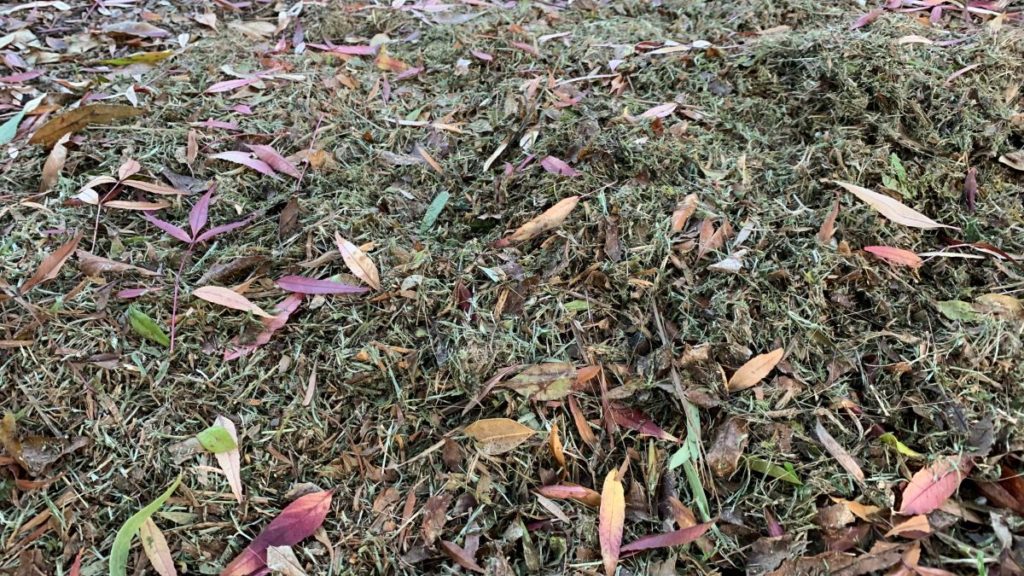
Advantages
Grass clippings are free and easy to access if you have your own lawn. You will get lots of grass clipping each year and it is easy to collect in your mower’s catcher.
Disadvantages
Grass clippings on their own can choke the soil of oxygen and if applied to thickly it can prevent rain from reaching the ground. It can also contain weed seeds which can sprout if moved into your garden.
Where to use
To use grass clippings as mulch place them in your compost first and let them break down over time with a range of other materials. Using a hot composting method is the best way to kill off the seeds to stop them sprouting. Once composted they can be used anywhere throughout your garden.
To use grass clippings without composting them, spread them thinly under large trees and top them with tree mulch.
Pea straw mulch
Advantages
Pea straw mulch is full of carbon and is the perfect mulch for adding to the top of vegetable gardens or areas of soil that need repair. Pea straw mulch will contain pea seeds which can sprout and be easily dug into the soil to add nitrogen.
Pea straw mulch will hold moisture in the soil and stop weeds if laid 2-3 inches thick. It is an affordable mulch option costing from $5-$10 per bale.
Disadvantages
Pea straw mulch will need to be replaced over time. It will quickly turn a brown color after rain so is not as attractive as bark mulch.
Where to use
Vegetable gardens, around strawberries, over poor soil patches that need protection. Use in areas you want to improve soil and make compost.
Lucerne mulch
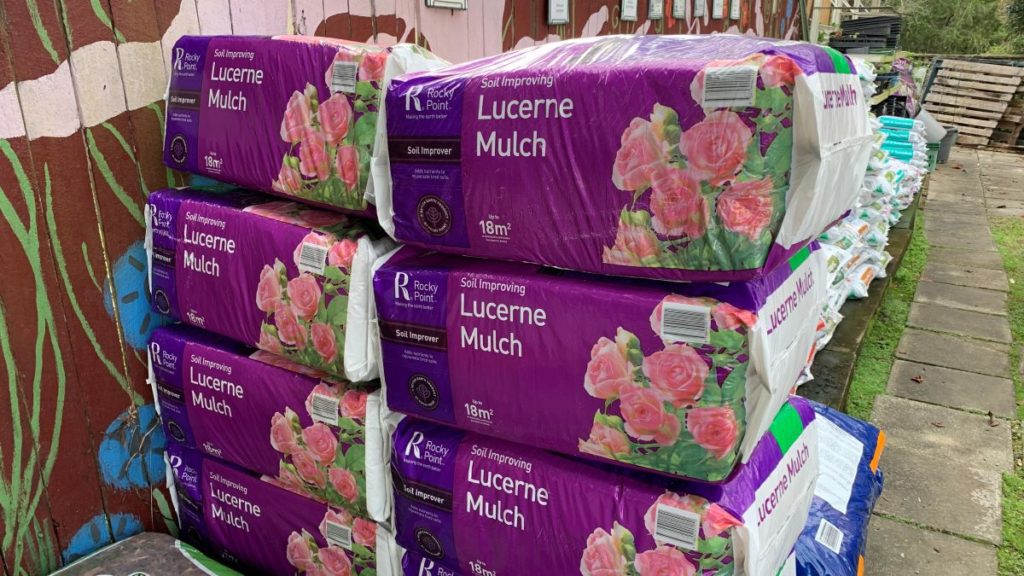
Advantages
Lucerne mulch is higher in nitrogen than straw or bark mulch. It is perfect for vegetable gardens and will break down over the growing season.
Disadvantages
Lucerne mulch is more expensive than other mulches like sugar cane or straw. It will break down quicker than bark or mixed tree mulch.
Where to use
Use under heavy feeding vegetables and fruit such as tomatoes, peppers and strawberries. It can be a great mulch for blueberries and other fruit trees such as apples and pears.
Fall Leaves
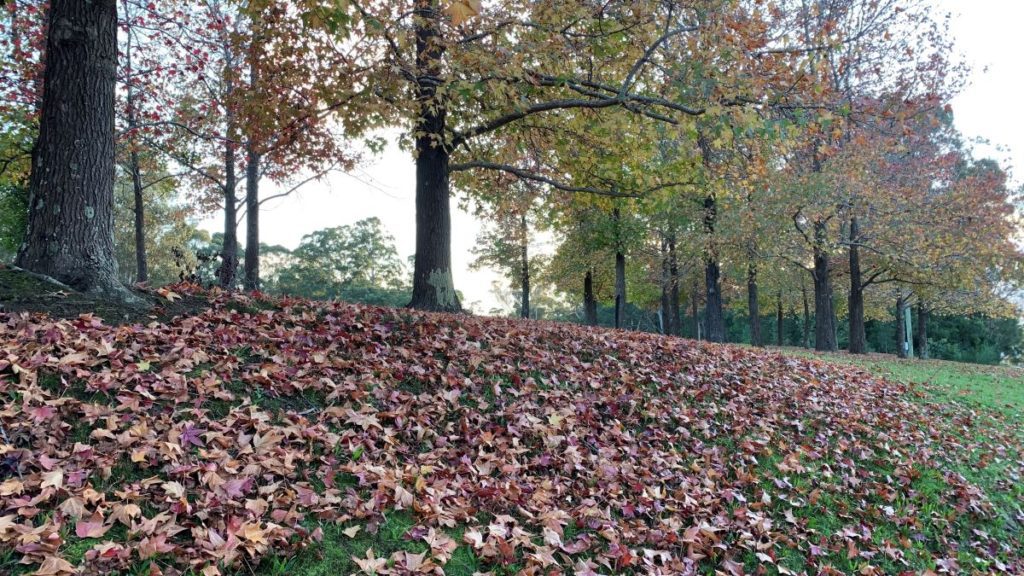
Advantages
Fall leaves are free mulch that can be easy to find. Fall leaves can be applied as mulch without doing anything other than raking them over your garden bed. Over time they will break down adding a rich compost to your soil.
Disadvantages
If applied too thickly fall leaves can starve the soil of oxygen or light. They are only available 1-2 months per year.
Where to use
Fall leaves can be placed straight on your garden but for better results shred them in a blower vac. You can also turn them into leaf compost by breaking them down in a wire cage over winter. Check out my previous article here on how to compost using just fall leaves.
Straw mulch
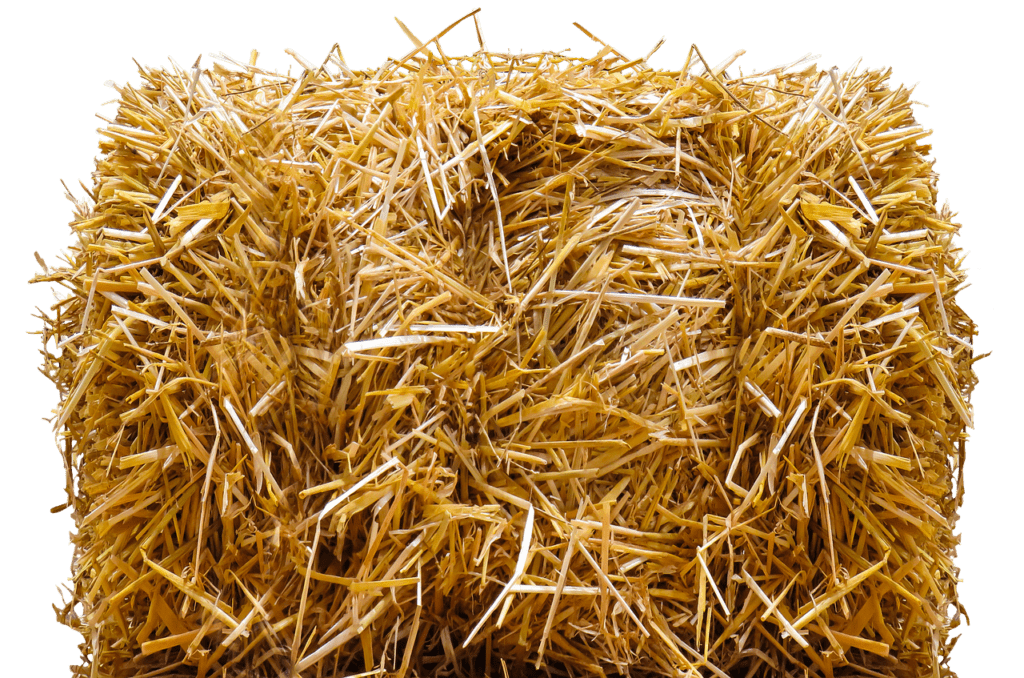
Advantages: Straw mulch adds carbon and a small amount of nitrogen to your soil over time. It will break down over 3-6 months so can be incorporated into soil after vegetables have finished their growing season.
Disadvantages
Straw mulch breaks down quickly so will need to be replaced more often than bark mulch or landscaping stone. It is not as stylish as bark mulch which comes in a range of colors and can discolor over time.
Where to use
Use straw mulch around strawberries, blueberries and in your vegetable garden. It is great for quick growing herbs like basil and parsley.
Wood shavings
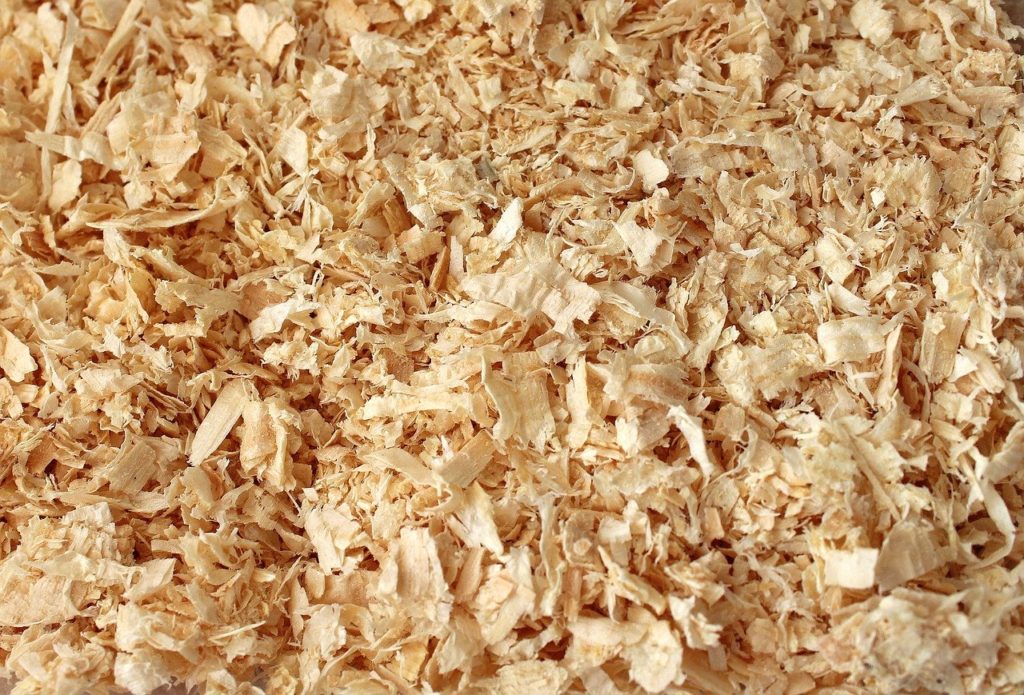
Advantages
Wood shavings can be free or very cheap to access. They are high in carbon and work well when mixed together with other mulches such as compost and bark mulch.
Disadvantages
Wood shavings can clump together and absorb nitrogen from the soil. They should not be used on their own in garden bed areas without mixing with another mulch that will provide oxygen and nitrogen back into the soil.
Where to use
Wood shavings on their own can be used on garden paths or areas that you do not want to have plant growth. If you mix them with compost, aged cow manure and bark chips this can be used as a mulch in open garden beds with flowers or shrubs.
Compost
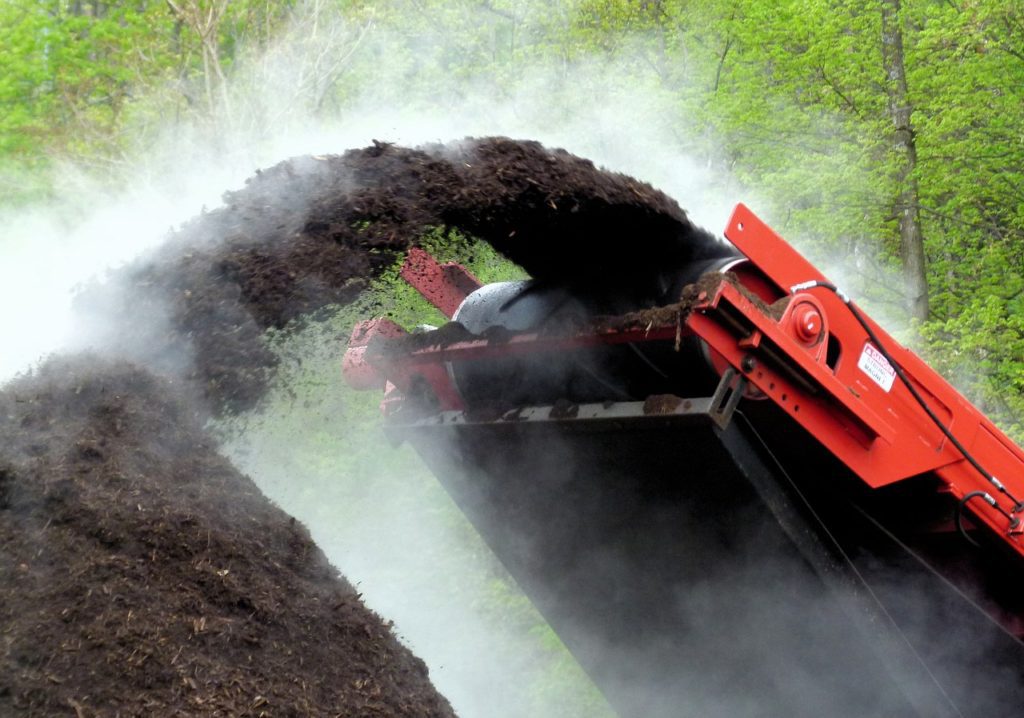
Advantages
Compost is a great mulch for under fruit trees, in vegetable gardens on top of flower beds or placed as a layer under bark mulch. Compost will add organic matter to your soil over time, help the soil to keep moisture in and prevent weeds from growing. The nutrients from the compost will be washed down your plants and can improve leaf, stem and root growth.
Disadvantages
Compost takes at least 3 months to make if you are using it at home and will cost $7-10 per bag to purchase. Compost when used on its own can dry out so it is best covered with another mulch like bark chips or straw.
Where to use
Use compost as a mulch in your vegetable garden, around herbs, under the root zone of fruit trees and in annual garden beds.
Newspaper and Cardboard
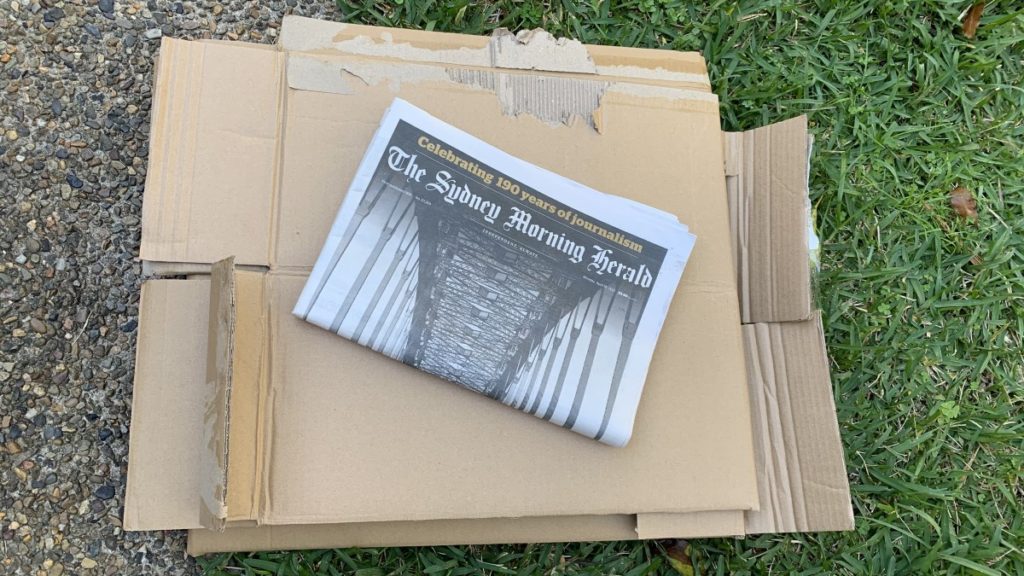
Advantages
Newspaper and carboard are a free or low cost mulch option and are easily accessible. They will cover your ground and stop weeds from growing through with very little effort. They are a great base for creating a no-dig garden.
Disadvantages
Newspaper and cardboard will need to be covered with another type of mulch to hold it in place. They are light materials so will dry out quickly and can blow away without another mulch on top. These materials will break down over time so will need to be replaced in your garden.
Where to use
Use layers of cardboard or newspaper on the soil first, then cover with bark mulch, straw or sugar cane mulch to create the perfect no-dig garden bed.
Coconut Coir
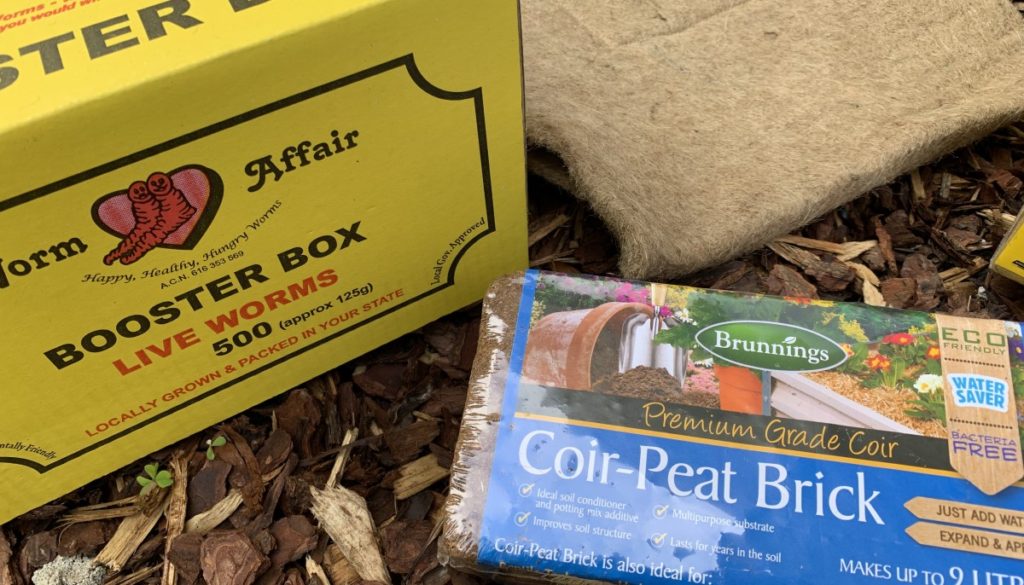
Advantages
Coconut coir is a cheap mulch that is easy to transfer as you can purchase it in compressed blocks. Simply add water and the block expands at least 5x the original size. Coconut coir comes from the waste material from the husk of a coconut so it an eco friendly choice.
Disadvantages
If coconut coir is applied on its own as a mulch it can dry out on the surface of your soil. It contains minimal nutrients compared to other mulches such as lucerne.
Where to use
Coconut coir is best used as a mulch when mixed with bark mulch or mixed tree mulch. Both will break down over time supporting microorganism growth in your soil and attract worms
Sugar Cane Mulch

Advantages
Sugar cane mulch comes from waste materials from the sugar making process so is a great way to re-use unwanted material. It is an affordable option and a compact bale will cover a large area in your garden. It adds carbon into the soil, can stop weeds and keep moisture in.
Disadvantages
Sugar cane mulch can form mold if laid too thickly in areas of high rain and shade. It can discolor quickly so will not look as attractive as other types of mulch such as bark which keeps their color for longer. It also breaks down quicker so need to be replaced every 3-6 months.
Where to use
Use sugar cane mulch under fruit trees such as mango and citrus. Use it around sweet peas and in your vegetable garden. Use it in your worm farm to cover food scraps to deter ants.
Mulch types – Summary
This is a great guide to the common types of mulch and where you should use them. Experiment at home to find your favorite mulch to improve your soil, keep moisture in and make your garden look great.
Happy mulching.
I am an accredited practicing dietitian, experienced gardener and a dedicated cook. I love writing and sharing my experience so you can learn from my successes and mistakes.

Comments are closed.